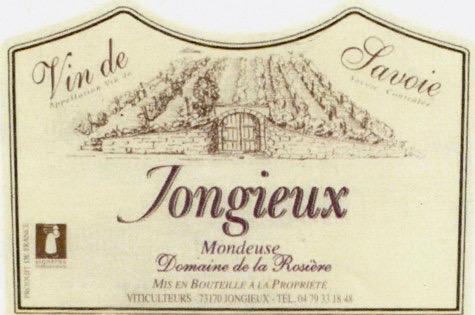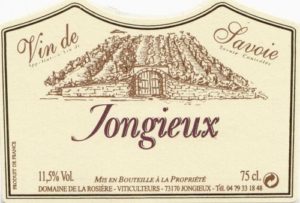
Mondeuse
| Country | France |
|---|---|
| Region | Savoie |
| Producer | Domaine de la Rosière |
| Size | 750mL |
| Style | Red |
| Practices | HVE, Sustainable |
| Other Features | Vegan |
All of Domaine de la Rosière’s 2 hectares of Mondeuse vines – the Savoie region’s native and unique red grape – grow on sunny, south-facing slopes with limestone-clay soils at about 350 meters of altitude. Half of the vineyard is 45 year old and the other vines are between 10 and 20 years of age. To ensure perfect ripening, Eric Carrel prunes severely to allow only 5 bunches (which typically weigh over 1.5 pounds each) per vine because the Mondeuse variety produces abundantly but ripens late. He also thins out the bunches, green-harvests and strips leaves. The Mondeuse grapes are picked entirely by hand in mid-October at the end of the harvest period. The fruit is sorted and partially de-stemmed (70%) before fermentation and vatting. The stems present in the tank serve to aerate the must which helps the fermentation process to advance. Carrel circulates the juice over skins (remontage) each day. After about 10 days, in order to extract color and flavor and avoid harsh tannins, he does a single délestage operation, whereby the entire liquid content of the tank is removed and then poured back in over the cap of skins. The vatting period lasts about 14 days and the young wine is tasted twice daily to ensure that its tannins remain supple.
The wine is matured in stainless steel tanks for 8 months. To further develop flavor and soften the tannins, Carrel introduces air into the tanks through micro-oxygenation after the first racking. Eric was the first in the region to do this. The Mondeuse next undergoes malolactic fermentation to balance the level of acidity. It is assembled, bottled over the summer, and released after 2-3 months of bottle age. The Domaine de la Rosière Mondeuse has an opaque, dark purple color but is relatively low in alcohol for such a deeply flavored wine. It presents aromas and flavors of blackberries, cassis, dark chocolate, licorice and minerals, all lifted and prolonged by soft tannins and the unique sensation of Alpine freshness.
About the Producer

Domaine de la Rosière is located in the village of Jongieux, which is the largest of the 17 appellations of the Savoie region, in the beginnings of the French Alps. It is situated about 40 miles southwest of Geneva, in between the Rhône River (near its start) and Lac du Bourget, France's largest lake.
The estate dates back to the late 19th century and was expanded to its present size in the 1970s and 80s. Eric Carrel and his father François, now retired, cultivate 13.5 hectares of vines in the Jongieux and Marestel appellations, all planted with the traditional varieties of the region - Jacquère (2ha, bottled as Vin de Savoie Jongieux Banc), Altesse (in the Lucey part, which is the extension of Marestel hill but with a lesser slope), Pinot Noir, Gamay and the unique red Mondeuse - planted on the steepest part of Marestel, one of the regions’ top Cru, located in Jongieux. 100% of the production is estate-bottled.
The Jongieux vineyards are very steep, southwest- facing slopes created by ancient glaciers. The altitude is between 400 and 500 meters, yet the microclimate is very warm. The ideal limestone dominant slopes of the Jongieux appellation allow the grapes to ripen more fully than in any other Savoie region, due to 2-3 hours more sun daily. As a result, the wines are not only fuller, but also more balanced and fresher, because there is far less need for chaptalization.
Farming practices: sustainable. Certified Haute Valeur Environnementale. All of the vineyards have grass planted between the rows to reduce yields and create a healthy natural ambiance, and only organic fertilizer is used. Eric Carrel has acquired a machine with a flexible blade, called the Tondeuse Intercep, to cut the grass under the vines on the flatter parcels.For the steeper slopes, he is planting a low "crawling" grass that does not need cutting but which does not compete with the vines.
Map of the Savoie region

related products
-
Domaine de la Rosière
Jongieux Blanc

